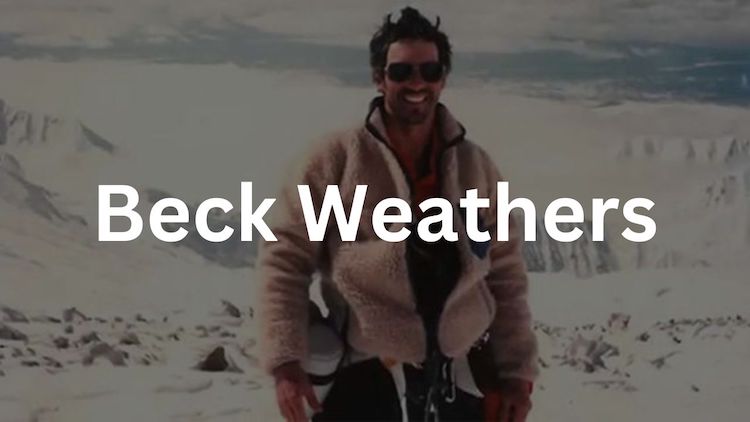On May 10, 1996, one of the most disastrous events ever recorded in Everest’s history unfolded. Beck Weathers found himself facing a life-or-death struggle high on the slopes of the mountain. Trapped amidst a relentless blizzard, Weathers struggled to survive after he had ran out of oxygen and has vision.
Practically blind, and against all odds, Weathers defied fate and emerged alive after being left for dead on Everest. Beck, bearing frostbite on his right hand, arm and nose raced against the fading daylight, to reach High Camp (Camp IV) in order to save his own life.
This blog recounts Beck Weathers life before Everest, the events of the 1996 Mount Everest disaster, and his life now.
Quick Facts about Beck Weathers:
- He was born on December 16, 1946
- His passion for climbing began at the age of 40 during a short stay in the Rocky Mountain National Park
- Throughout life, Weathers dealt with severe and occasionally life-threatening depression
- Beck was a part of Rob Hall’s Everest expedition in 1996
- Weathers had to forego a summit bid due to his eyesight failing him on the climb. He was instructed to wait by the route until Hall returned.
- Beck Weathers finally began his descent during the storm, and was unable to return to Camp IV
- He was left for dead by rescuers as they believed he was already dead
- He spent over 20 hours on the mountain and at least 15 hours in an unconscious state in the cold
- Weathers succumbed to frostbite. Resulting in the loss of his right arm, all his fingers on his left hand, toes on both feet, and his nose.
- Beck Weathers survived the incident and now works as a motivational speaker
The Background and Life of Beck Weathers
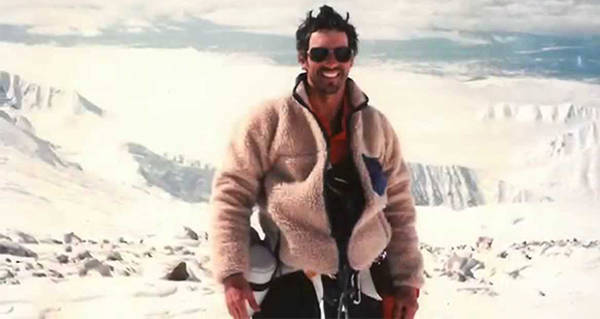
Beck Weathers, born on December 16, 1946, spent his formative years in Texas. He pursued a medical career, ultimately becoming a pathologist in Dallas. However, despite his professional accomplishments, an ongoing dissatisfaction in life gradually consumed him. Prompting him to embark on a quest for solace and meaning through mountaineering.
At the age of 40, Weathers realized his passion for climbing during a short stay in the Rocky Mountain National Park. His newfound passion for climbing and mountaineering, propelled him to challenge his own limits. Notably, he set his sights on conquering the seven summits. A lofty goal entailing scaling the tallest peaks on each continent. An aspiration that he never completed.
Weathers Struggled with Depression:
In the twenty years before Beck’s fateful expedition to Everest, he struggled with a severe and occasionally life-threatening depression that he aptly labeled as “the black dog”. Amidst this inner turmoil, the mountains emerged as sanctuaries of unparalleled joy and tranquility for him.
However, as his passion for mountaineering grew, it took a toll on his personal relationships. His family bonds, and especially those with his wife Peach Weathers, suffered. Due to him devoting so much time to his training, hospital duties, and climbing excursions.
Despite acknowledging the negative effects his obsession had on his marriage, Weathers found himself unable to quit mountaineering. His wife, Peach, had initially intended to divorce Beck upon his return from Everest. However, his brush with death and subsequent change in lifestyle, prompted her to reconsider, granting him a one year chance to demonstrate his change.
Beck Weather’s Eye Surgery:
Before Weathers set out for Nepal and Everest he had underwent a routine surgery known as radial keratotomy to address his nearsightedness. This procedure involved creating small incisions in his corneas to reshape them for improved vision. However, the high altitude of Everest had an adverse effect on his healing corneas, exacerbating his vision impairment and rendering him blind on the mountain.
More on how this effected his climb up Everest, below!
Beck Weathers and The 1996 Everest Disaster:
May 10, 1996, became widely known as the 1996 Everest Disaster. In which a storm engulfed the mountain, trapping multiple climbing teams in Everest’s Death Zone. The Death Zone, situated above 26,000 feet, has insufficient oxygen to sustain human life over prolonged durations. This caused countless deaths, and claimed the lives of multiple climbers on May 10. Beck Weathers was almost one of them.
The devastating storm accounted for the deadliest day ever witnessed on Everest. Claiming the lives of eight climbers, including some of the most famous dead bodies on Everest, such as Rob Hall, Scott Fischer, and Green Boots. Additionally, a fellow climber and Beck’s friend from the Adventure Consultants’ team, Doug Hansen also lost his life. However, Doug’s body was never recovered or seen again.
Beck Weathers was able to escape death on Everest that day. However, he did succumb to frostbite, resulting in the loss of his right arm, all his fingers on his left hand, toes on both feet, and his nose. Although his body was severely affected by the cold while spending over 15 hours unconscious in the frigid cold, he was able to make it back to Camp IV, and save his own life, after he was left for dead by rescuers.
What Happened to Beck Weathers High on Everest?
Upon realizing that Weathers could no longer see, Rob Hall, the expedition leader, made the decision to stop him from proceeding further up the mountain. He instructed Weathers to remain on the side of the trail until his sight improved or until he returned. Reluctantly, Beck agreed and Hall continued to guide the rest of the team towards the summit, with the plan of picking him up on their descent. However, this was the last time Weathers saw Rob Hall.
Despite offers from passing groups to join their descent, Beck waited for Hall, stating that he had promised him he would wait for Hall until he returned. However, this plan would fall apart due to the difficult time Doug Hansen “The Mailman”, was having during his summit bid. Determined not to abandon his friend Doug, Hall chose to wait and assist Doug the remainder of the way up the mountain.
Almost ten hours elapsed before Weathers realized something was amiss. Isolated on the side of the mountain, he had no choice but to wait for another climber to pass by. It was shortly after 5 p.m. when a Jon Krakauer descended and informed Weathers of Hall’s predicament. However, for some unknown reason Beck did not join Krakauer and decided to wait for Guide Mike Groom instead.
Weathers Was Left for Dead During The Disaster!
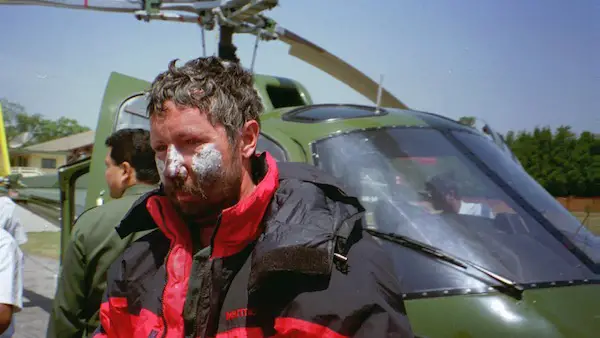
Caught in the storm at an altitude of 26,000 feet, Beck Weathers found himself in a deadly situation. Guide Groom eventually found and assisted him, and a weary group of climbers down to the South Col After making it partly down the mountain with his team, the group almost walked off the side of the mountain. Lost, and disoriented, Mike Groom, Beck Weathers, Yasuko Namba and other climbers decided to hunker down and try to wait out the storm.
Dazed and confused, Weathers stood up, with one bare hand already frozen, and said ‘I’ve got this all figured out!” He was instantly blown over, and the group feared the worse for him – that he was close to death.
A short time after, Anatoli Boukreev found the group, and was able to rescue the other climbers. However, upon inspection the Russian guide believed Weathers was already dead. The following morning, Canadian doctor Stuart Hutchinson and three Sherpas set out to search for Weathers and Yasuko Namba, a Japanese woman who had been left behind the previous night.
Namba was clinging to life, requiring Hutchinson to carefully remove a layer of ice from her face for examination. He sadly concluded that there was little that could be done; Namba’s complexion was pale like porcelain, and her pupils were dilated. Turning his attention to Weathers, who was partly buried in snow, Hutchinson observed the rigid right arm frozen above his head, his jacket open to the waist, and his face encased in ice. He assessed Weathers as “being on the verge of death yet still breathing.” He ultimatly decided that Beck Weathers could not be saved.
The news was announced that Weathers had passed away. However, at approximately 4pm, a remarkable event took place.
The Texan Defies Death:
Defying all expectations, Weathers experienced a miraculous resurgence. After a staggering 22 hours since the storm’s onset and 15 hours spent in a hypothermic coma, he regained consciousness, acutely aware that he had only a fleeting opportunity to secure his return to safety.
Weathers recounting the dire situation said,
‘I was so far gone in terms of not being connected to where I was,’ he says. ‘There was a nice, warm, comfortable sense of being in my bed. It was really not unpleasant.’
Weathers recounting his final moments before getting up
Disorientated and confused he began focusing on his frozen arm. Starting to bang it against the ground adrenaline began seeping through his system, and he started to grasp the situation.
‘This was not bed. This was not a dream,’ ‘This was real and I’m starting to think: I’m on the mountain but I don’t have a clue where. If I don’t get up, if I don’t stand, if I don’t start thinking about where I am and how to get out of there, then this is going to be over very quickly.’
Weathers recounting his final moments before saving himself
Weathers triumphed against staggering odds as he mustered the strength to get up and walk towards High Camp (Camp IV). Despite the debilitating frostbite that ultimately cost him his right arm, several fingers on his left hand, and nose, he was able to walk and crawl back and get help.
Beck Weathers, and fellow Taiwanese climber Makalu Gau were medevaced by helicopter off the mountain – which at the time, was the highest helicopter rescue on Everest ever.
What Happened To Beck Weathers After the Everest Disaster?
This section explores the post-1996 Everest disaster era of Beck Weathers’ life. We look at the transformation he underwent on both physical and personal fronts.
Physical Consequences Of The Disaster For Beck:

The events on Everest left an indelible mark on Weathers’ physically. Enduring prolonged exposure to the brutal cold, he suffered from frostbite, necessitating the amputation of his right arm below the elbow and the loss of all fingers on his left hand.
Additionally, his face needed reconstruction due to frostbite. Reconstruction of his nose and cheek was done by using tissue from his ear.
However, Weathers refused to allow these physical setbacks to shape his identity. Despite the anguish and challenges inherent in adapting to his transformed reality and body, he embraced the changes. Thanks to his second chance at life, he now commits to living life to its fullest, undeterred by his injuries.
Personal Transformation Of Weathers After Everest
In the aftermath of the disaster, Beck Weathers found himself with a newfound love for life and a deepened understanding of its intrinsic values. As a devoted husband and father, he underwent a remarkable shift, prioritizing his family above all else, seeking to compensate for the time previously lost to his career and mountaineering endeavors. Luckily, the transformation saved his marriage, as Peach, Beck Weathers’ wife wanted to divorce him, but gave him one more year after the Everest incident. The next year saved their marriage and the two are still together today.
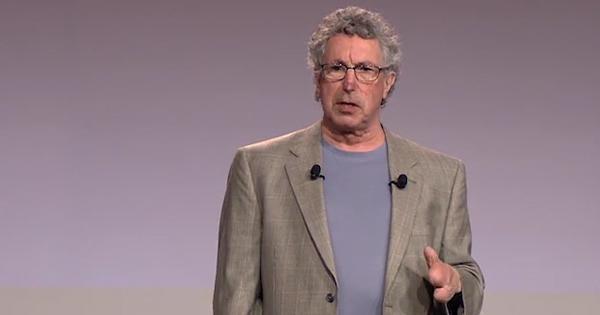
For work, Weathers became an influential orator, sharing his tale of survival and transformation with audiences across the globe. Through his narratives, he illuminated the significance of perseverance, resilience, and of the human spirit in surmounting daunting adversities. His survival saga struck a chord with countless individuals navigating their own challenges, positioning him as an emblem of hope and determination for those striving to overcome obstacles and embrace life to its fullest.
Beck Weathers’ story stands as a potent reminder of the risks, rewards, and unwavering resilience entwined within the pursuit of adventure. Through the medium of books, movies, and his own captivating words, Weathers talks to groups around inspiring all individuals to transcend their limits and embrace a life brimming with fulfillment, irrespective of the obstacles encountered along the way.
Where is Beck Weathers Today?
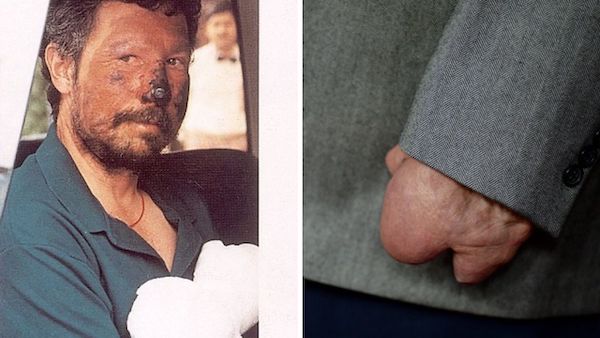
Weathers shared his account of his Everest experience and personal journey in the book “Left for Dead: My Journey Home from Everest” (2000). Alongside his literary pursuits, he maintains his medical career and delivers inspirational and motivational speeches, captivating audiences with his remarkable story. Weathers currently resides in Dallas, Texas, where he serves as a member of the pathology staff at Medical City Dallas Hospital.
Beck Weathers and his wife Peach are still living together in Dallas, Texas. In a tragic but positive moment, Beck Weathers would not be the same today, without the Everest disaster. Today, Beck Weathers is more present, and not looking forward to anything else. Issues that plagued his marriage with Peach Weathers before.
The disaster, and loss of Beck Weathers’ hands and nose to frostbite have transformed his life. He is now living happily with his wife Peach, and has no nightmares of the incident as he has come to terms with it.
The Ongoing Challenges and Pursuits of Beck Weathers:
While the aftermath of the Everest disaster left a mark on Weathers’ physical being, his spirit for adventure and self-exploration remained resolute. His passion for the great outdoors, has evolved into a new pursuit: flying. A realm where he finds both exhilaration and solace.
Moreover, Weathers has discovered solace and profound fulfillment in creative endeavors. Particularly painting, which has become a profound avenue for self-expression and personal growth. His artistic creations, often inspired by his immersive experiences in nature, serve as captivating reflections of the inherent beauty within the world around us. His paintings resonate with his deep-seated appreciation for life’s simple yet profound joys.
Finding a Balance of Risk and Family Life:
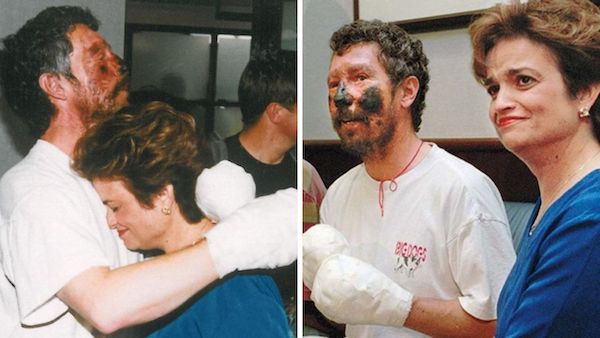
The aftermath of the Everest disaster compelled Weathers to reevaluate his priorities, seeking a harmonious equilibrium between his love for adventure and his responsibilities as a husband and father. Embracing his role as a dedicated family man, he treasures the precious moments shared with his wife and children, ensuring that his pursuits align harmoniously with his unwavering commitment to their well-being.
His transformative experience instilled within him a profound understanding of the significance of moderation and risk management within the realm of outdoor exploration. Now, he endeavors to embody a role model for others within the mountaineering community, sharing his remarkable story and imparting the invaluable lessons he has learned along the way. Weathers aspires to inspire individuals to approach their passions with a balanced perspective, fostering a healthy respect for the inherent risks involved, as well as for the environment and the cherished individuals who hold paramount importance in their lives.
The Media and Public Attention of Beck’s Tragic Events on Everest:
Weathers’ Everest story has become an everlasting part of mountaineering history, immortalized through various literary and cinematic works. Jon Krakauer’s widely acclaimed book, “Into Thin Air,” stands as an authoritative firsthand account of the events throughout the 1996 expedition. Gripping readers with its haunting and vivid depiction of the events that day. Beck Weathers’ book, titled “Left for Dead: My Journey Home from Everest,” discusses his emotional voyage and the invaluable life lessons he gleaned from his time on Everest. It stands as a supporting account of Krakauer’s Into Thin Air.
In 2015, director Baltasar Kormákur brought the 1996 disaster to life on the big screen with the film “Everest” (one of my favorites, and must watch movies on Everest!) Featuring an ensemble cast, including Josh Brolin portraying Beck Weathers, the movie delivered a dramatic and intense portrayal of the fateful expedition, captivating audiences and cementing Weathers’ story in the collective consciousness of the public.
Beck Weathers’ Life Changing Experience on Mount Everest:

The awe-inspiring tale of how Beck Weathers’ was left for dead, and how he avoided death on Everest, has captured the hearts and minds of the entire mountaineering community.
Weathers’ extraordinary odyssey from the precipice of death on the world’s tallest peak to a renewed existence brimming with purpose and fervor serves as a profound source of inspiration for those who confront their own trials.
Beck Weathers’ experience on Everest yields invaluable lessons for outdoor enthusiasts worldwide. It underscores the utmost significance of thorough preparation, unwavering teamwork, and effective communication within extreme environments. By sharing his resounding narrative, Weathers has emerged as an influential advocate for change within the mountaineering community, galvanizing others to reassess their priorities and emboldening them to embark on a path of personal growth and profound transformation.
FAQs: The Story of Beck Weathers on Mount Everest
Below are some of the most frequently asked questions regarding Beck Weathers on Everest.
Beck Weathers survived Mount Everest by spending over 18 hours enduring the elements on the slopes above camp IV. He eventually was able to walk and crawl under his own power back to the camp. He was then flown off Everest to a hospital.
In addition to the reconstructive surgery on his nose, Weathers underwent the challenging process of amputating his right arm, the fingers on his left hand, and substantial portions of both feet. Medical professionals successfully reconstructed his nose using skin grafts from his neck and ear. Even more remarkably, they achieved the remarkable feat of growing the reconstructed nose on Weathers’ own forehead.
Beck was left for dead because rescuers who reached him discovered the critical state he was in, and believed that he was going to die. The rescuers moved on in search of others that they believed had a chance to live.
Beck Weathers lost his entire right hand and all four fingers and his thumb on his left hand, along with the removal of portions of both feet, and his nose.
Seaborn Beck Weathers works as an American pathologist for a living. He lives in Texas, and was born on December 16, 1946. He achieved a remarkable survival in the infamous 1996 Mount Everest disaster, a catastrophic event chronicled in Jon Krakauer’s gripping book “Into Thin Air” (1997), its film adaptation “Into Thin Air: Death on Everest” (1997), as well as the movies “Everest” (1998) and “Everest” (2015).
